![]()
![]()
![]()
Use LEFT and RIGHT arrow keys to navigate between flashcards;
Use UP and DOWN arrow keys to flip the card;
H to show hint;
A reads text to speech;
173 Cards in this Set
- Front
- Back
- 3rd side (hint)
|
What are the pre-requisites for HazMat Technician ?
|
Awareness and Operations levels.
|
|
|
|
What NFPA Standard and Chapter list competencies for HazMat Technicians ?
|
NFPA 472
Chapter 6 |
|
|
|
HazMat Techs are those persons who respond to releases or potential releases of Hazardous Materials for the purpose of...
|
CONTROLLING the release
|
|
|
|
Techs are expected to use _________ chemical protective clothing and _________ control equipment
|
Specialized
Specialized |
|
|
|
A-P-I-E-T
|
Analyze
Plan Implement Evaluate Terminate |
|
|
|
Corrosive with pH less than 7
|
Acid
|
|
|
|
When in water, acids will release ...... which can cause closed containers to pressurize or rise in temp
|
positive charged ions
|
|
|
|
Corrosive with a pH greater than 7
|
Caustic or Base
|
|
|
|
When in water, bases will release ...... which can cause closed containers to pressurize or rise in temp
|
negative charged ions
|
|
|
|
Name two other terms used for caustics
|
Base
Alkaline |
|
|
|
Acids react with ________
|
Metals
|
|
|
|
Bases react with ________
|
Oils
|
|
|
|
The ability of a material to destroy a material that it comes in contact with
|
Corrosivity
|
|
|
|
Numerical measure of a solution's hydrogen ion concentration as related to acidity or alkalinity
|
pH
|
|
|
|
The measure of a corrosive's ability to completely dissolve or ionize in water giving off positive hydrogen ions
|
Strength
|
|
|
|
Percentage of corrosive to water
|
Concentration
|
|
|
|
Anhydrous
|
No Water
Inorganic Compund |
|
|
|
Fuming
|
A highly active liquid evolving visible smoke-like emanationsin contact with air
|
|
|
|
Glacial
|
Acids having a freezing point below room temp when in a highly concentrated state
|
|
|
|
Dilute
|
A solution containing less than 10% concentration in water
|
|
|
|
The combining of anything with oxygen or the PROPENSITY TO YIELD OXYGEN
|
Oxidation Potential
|
|
|
|
Anything that has mass and occupies space
|
Matter
|
|
|
|
Substance of single elements and compounds
|
Pure Substance
|
|
|
|
Substance with more than one type of molecule physically mixed together but not bonded
|
Mixture
|
|
|
|
Substance made up of one kind of atom
|
Element
|
|
|
|
Elements that bond with themselves to become stable
|
Compound
|
|
|
|
Contains Carbon, living or once lived
|
Organic
|
|
|
|
Lacks carbon, man made
|
Inorganic
|
|
|
|
Bond between a metal and non-metal, a TRANSFER of electrons takes place, considered a salt
|
Ionic Compund
|
|
|
|
Bond between a non-metal and a non-metal, a SHARING of electrons takes place, considered a non-salt
|
Covalent Compound
|
|
|
|
Temperature at which the transition from a liquid to a gas state occurs. Vapor pressure = atmosphericpressure so the liquid rapidly expands
|
Boiling Point
|
|
|
|
Amount of gas produced by a given volume of liquid at a given temp
|
Expansion ratio
|
|
|
|
What to measures make up Flamable Range ?
|
LEL
UEL |
|
|
|
Concentraiton of vapors considered to be "TOO LEAN" to burn
|
LEL
|
|
|
|
Concentration of vapor considered to be "TOO RICH" to burn
|
UEL
|
|
|
|
Temp at which a LIQUID gives off enough vapors to support CONTINUOUS BURNING of an ignitable fuel mixture in air
|
Fire Point
|
|
|
|
Minimum temo at which a LIQUID gives off enough vapors to form an ignitable mixture in air.
|
Flash Point
|
|
|
|
Minimum temo at which a MATERIAL gives off enough vapors to form an ignitable mixture in air
|
Ignition Temp
|
|
|
|
Name the two types of ignition temp
|
Auto-
Pilot- |
|
|
|
Ignition Temp....
Material is heated to a point where it's hot enough to ignite the vapors without an outside ignition source |
Autoignition Temp
|
|
|
|
Ignition Temp.....
An external souce such as a spark or flame is needed |
Pilot Ignition
|
|
|
|
Three types of Physical State
|
Solid
Liquid Gas |
|
|
|
Physical State
Has a definite shape and size |
Solid
|
|
|
|
Physical State
Specific volume and flows easily. Most Common state of Haz Materials. |
Liquid
All Liquids want to become gasses |
|
|
|
Physical State
Compressed ate greater than atmoshperic pressure |
Gas
|
|
|
|
Physical State
Liquified by pressure or temp |
Gas
Boiling point greater than that of cryogenics |
|
|
|
Physical State
Condensed by pressure AND temp, boiling point less than -150' F |
Cryogenic
|
|
|
|
Physical Changes
Solid to liquid |
Melting point
|
|
|
|
Physical Changes
Liquid to gas |
Vaporization
|
|
|
|
Physical Changes
Gas to liquid |
Condensation
|
|
|
|
Physical Changes
Liquid to solid |
Freezing Point
|
|
|
|
Physical Changes
Solid directly to Gas |
Sublimation
|
|
|
|
Ability of a substance to mix with water
|
Water Solubility
|
|
|
|
Water soluble compunds
|
Polar
|
|
|
|
Ability of two or more liquids to form a uniform blend or to dissolve in each other
|
Miscibility
|
|
|
|
Mixture in which all ingredients are completely dissolved
|
Solution
|
|
|
|
Pourable mixture of a solid and a liquid
|
Slurry
|
|
|
|
Measure of the thickness of a liquid
|
Viscosity
|
|
|
|
Weight of a material compared to an equal volume of water
|
Specific Gravity
|
|
|
|
Weight of a vapor compared to air
|
Vapor Density
|
|
|
|
Force exerted by the vapors of a liquid against the atmosphere or the sides of a container
|
Vapor Pressure
|
|
|
|
Ability of a liquid to pass into thevapor state
|
Volatility
|
|
|
|
By-products of the combustion process as well as chemical reactions
|
Toxic products of combustion
|
|
|
|
Advantages of Biologics and toxins as weapons
|
Dissemination over large geographic area
Creates panic Can overwhelm medical services Perpetrators escape easily |
|
|
|
more
Advantages of Biologics and toxins as weapons |
Infectious via aerosol
Organisms stable in environment susceptible civilian populations High morbidity and mortality person-to-person transmission (smallpox, plague, VHF) Difficult to diagnose |
|
|
|
Anthrax routes of exposure
|
Skin absorbtion
Respiratory system ingestion handling contaminated hides, hair, flesh or excriment |
|
|
|
Acute bacfteriologic disease
|
Anthrax
|
|
|
|
Initial infections of this are usually from a bite from a flea carrying the disease
|
Plague
|
|
|
|
Plague routes of exposure
|
Respiratory
Injection |
|
|
|
Why is Pneumonic plague a larger danger
|
Victims produce a highly contagious infectious aerosol
|
|
|
|
These grow and reproduce by forcing host cells to produce additional viruses
|
Viruses
|
|
|
|
Smallpox routes of exposure
|
Respiratory
|
|
|
|
These are produced by almost every known major category of living organism
|
Toxins
|
|
|
|
Most potent toxins known
|
Botulinum Toxins
|
|
|
|
Butulinum routes of exposure
|
Ingestion
Injection |
|
|
|
Water Soluble constituent of castor beans
|
Ricin
|
|
|
|
Ricin exposure routes
|
Respiratory
Ingestion Injection |
|
|
|
Other Biologics
|
VHF- Viral hemorhagic fever (Ebola)
VEE- Venezulan equine encephelitis |
|
|
|
Chemical Agents
Remains in the target area for a LONG PERIOD OF TIME |
Persistent
|
|
|
|
Chemical Agents
Remains in the target are for a RELATIVELY SHORT PERIOD OF TIME |
Non-Persistent
|
|
|
|
Nerve Agents
GA |
Tabun
|
|
|
|
Nerve agents
GB |
Sarin
|
|
|
|
Nerve Agents
GD |
Soman
|
|
|
|
Nerve Agents
VX |
V Agent
|
|
|
|
Nerve Agents
H |
Mustard
|
|
|
|
Effects similar to Mustard
|
Lewisite
|
|
|
|
Block ability perfuse
|
Blood Agents
|
|
|
|
Fission device
|
Atomic bomb
|
|
|
|
Fission device routes of exposure
|
skin contact
respiratory ingestion |
|
|
|
Conventional explosives to spread radioactive contamination
|
RDD - Radiological Dispersal Device (Dirty Bomb)
|
|
|
|
RDD Routes of exposure
|
Skin absorbtion
respiratory ingestion injection |
|
|
|
The sensitivity of a material to air without the addition of heat or confinement
|
Air Reactivity
|
|
|
|
The sensitivity of a material to water without the addition of heat or confinement
|
Water Reactivity
|
|
|
|
Added to products to control their chemical reaction with other products
|
Inhibitor
|
|
|
|
Materials that decompse spontaneously, polymerize, or otherwise self react and are generally considered unstable
|
Instability
|
|
|
|
Used to control the rate of a chemical reaction by either speeding it up or slowing it down
|
Catalyst
|
|
|
|
May result in a build-up of heat that, in turn, causes an increase in pressure and may be more harmful than the material the containerwas originally designed to withstand
|
Chemical Interactions
|
|
|
|
Exposure to two materials of like hazard
|
Addition
|
|
|
|
Exposure to chemicals of like hazard
|
Synergism
|
|
|
|
Exposure to a non-toxic material and another of moderate toxicity
|
Potentiative
|
|
|
|
Exposure to these materials, the effects would be lessened
|
Antagonism
|
|
|
|
Substance's propensity to release energy or undergo change
|
Chemical reactivity
|
|
|
|
Have a tendancy to break down into their component parts
|
Compund mixture
|
|
|
|
The tendancy of like molecules to react with one another and form long chain compounds
|
Polymerization
|
|
|
|
Temperature above which a gas can't be liquified
|
Critical Temp
|
|
|
|
The pressure required to liquify a gas when it's at critical temp
|
Critical pressure
|
|
|
|
When this temp is reached by some portion of the mass of the ORGANIC PEROXIDE, irreversible decomposition will begin
|
Self-accelerating decomposition temp
|
|
|
|
Maximum temp that an organic peroxide may be stored safely
|
Max safe storage temp
|
|
|
|
Materials in which the carbon atoms are linked by only single covalent bonds (Alkalanes)
|
Saturated Hydrocarbons
|
|
|
|
Materials that have at least one multiple bond between two carbon atoms somwhere in the molecule (Alkalenes, Alkalynes)
|
Unsaturated Hydrocarbons
|
|
|
|
Materials that contain the "Benizine Ring" which is formed by six carbon atoms and contains doublebonds
|
Aromatic Hydrocarbons
|
|
|
|
Values used to determine exposure limits
|
PPM
PPB |
|
|
|
Single dose that causes the death of 50% of a group of test animals by any route other than inhalation
|
LD-50
|
|
|
|
Concentration of a material in the air that is expected to kill 50% of a group of animals by inhalation
|
LC-50
|
|
|
|
OSHA Term that is the same as TLV-TWA
|
PEL
|
|
|
|
Can be exposed 8 hours per day, 40 hours per week
|
Threshold Limit Value time weighted average
|
|
|
|
15 minute exposure time
|
Threshold limit value short term exposure limit
|
|
|
|
Max concentration of exposure
This limit is found in guidebooks and depends on the chemical |
Threshold limit value Ceiling
|
|
|
|
Max exposure for 30 minutes
|
IDLH
|
|
|
|
Spontaneous nuclear transformation that results in the formation of a different element and usually the release of excess energy as particulate and electromagnetic radiation
|
Radioactivity
|
|
|
|
Ionizing radiation
|
Alpha
Beta Gamma X-ray Ultraviolet Light |
|
|
|
Non-ionizing radiation
|
Visible light
infrared light microwaves radio waves |
|
|
|
Positive charged particle usually not dangerous unless ingested. Can be blocked with paper
|
Alpha
|
|
|
|
Particle that can damage skin tissue and internal organs. Can be blocked by PPE and SCBA
|
Beta
|
|
|
|
Rays that can burn skin, severely damage internal organs. Protection is Time/Distance/Shielding
|
Gamma
|
|
|
|
Amount of radiation administered to a certain body part
|
Dose
|
|
|
|
Amount of radiation absorbed by the human body
|
Absorbed dose
|
|
|
|
Rate dose is administered to body part
|
Dose Rate
|
|
|
|
Amount of energy given off
|
Activity
|
|
|
|
Amount of Gamma given off
|
Quantity Gamma
|
|
|
|
Amount of time for 1/2 of atoms to break-down
|
Half-Life
|
|
|
|
Effect from localized source spread uniformly throughout surrounding space
|
Inverse square law
|
|
|
|
Amount of radiation absorbed per gram of body tissue
|
RAD (Radiation absorbed dose)
|
|
|
|
Amount of body tissue damage caused by radiation relative to a dose of 1 x-ray
|
REM (Roentgen equivalent Man)
|
|
|
|
One Thousandth of a Rem
|
Milirem (MREM)
|
|
|
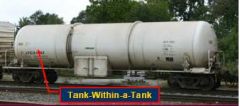
Car Product and Class
|
Cryogenic Tank Car
LOX Class 2 |
Dog House
|
|
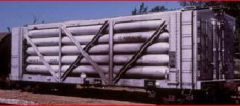
Car Class Product
|
High Pressure Tube Car
O2 Clas 2 |
|
|

Car Product Class
|
Non Pressure Tank Car
Whiskey Class 3 |
|
|

Car Product Class
|
Non Pressure Tank Car
Whiskey Class 3 |
|
|
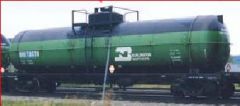
Car Product Class
|
Non Pressure Tank Car with Dome
Whiskey Class 3 |
|
|

Car Product Class
|
Non Pressure Tank Car
Whiskey Class 3 |
|
|
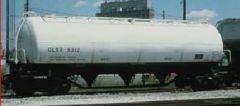
Car Product Class
|
Hopper Car
Fertilizer Class 5 |
V-Shapes
|
|
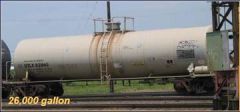
Car Product Class
|
Pressure Tank Car
O2 Class 2 |
protected fittings
|
|

Type Product Class
|
Nonpressure intermodal
Whiskey Class 3 |
|
|

Type Product Class
|
Pressure Intermodal
O2 Class 2 |
|
|
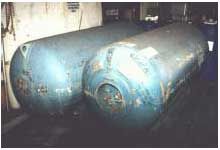
Type Product Class
|
Pressure Intermodal
O2 Class 2 |
|
|
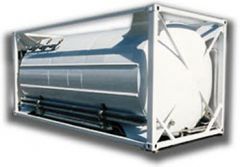
Type Pruduct Class
"EURO Tainer" |
Cryogenic Intermodal
LOX Class 2 |
|
|
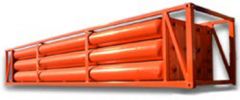
Type Product Class
|
Tube Module
O2 class 2 |
|
|
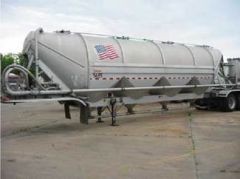
Type Number Product Class
|
Dry bulk Cargo Tank
Fertilizer Class 5 |
V Shapes
|
|
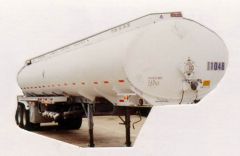
Type Number Product Class
Oval Tank goes to outside of tires |
MC-306 Nonpressure Liquid
Whiskey Class 3 |
|
|
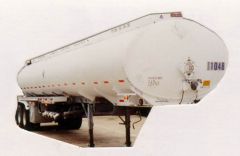
Type Number Product Class
Oval Tank goes to outside of tires |
MC-306 Nonpressure Liquid
Whiskey Class 3 |
|
|

Type Product Class
|
MC 307 low pressure
Whiskey Class 3 |
Horseshoe shape
|
|
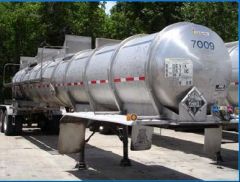
Type Product Class
|
MC-312 Corrosive Liquid Cargo Tank
Sulfuric Acid Class 8 |
Round and sits on inside of tires
|
|
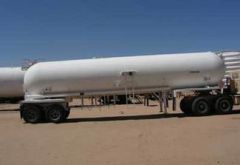
Type Product Class
|
MC 331 High Pressure
O2 Class 2 |
Round shape (cigar tube)
No Exposed fittings |
|

Type Product Class
|
Compressed Gas Tube Cargo Tank
O2 Class 2 |
|
|

Type Product Class
"BOC GASSES" |
Cryogenic Liquid Cargo Tank
|
|
|
|
Non Pressure Cargo Tank
|
MC-306
|
|
|
|
Low Pressure Cargo Tank
|
MC-307
|
|
|
|
Corrosive Crago Tank
|
MC-312
|
|
|
|
High Pressure Cargo Tank
|
MC-331
|
|
|
|
Cryogenic Cargo Tank
|
MC-338
|
|
|
|
Methods for detecting nerve agents
|
ICAM-D, M18-A2, M-256, M8/M9, Colorimetric tubes
|
|
|
|
Methods for detecting Vesicants
|
ICAM-D, M18-A2, M-256, M8, Colorimetric tubes
M9 will not work |
|
|
|
Methods for detecting Biologics
|
Outward signs
|
|
|
|
Methods for detecting Irritants
|
Recognition of signs such as tearing eyes
|
|
|
|
Steps (order)of monitoring for Identifying an unknown atmospereh
|
Radioactivity
Combustability Oxygen Availability/deficiency pH, Hydrogen Sulfide,CO, Organic (toxic) vapors |
|
|
|
What is used to mintor for Radioactivity
|
Radiation Detector
|
|
|
|
What is used to monitor for combustible gasses
|
CGI
|
|
|
|
What is used to monitor for O2
|
O2 Meter
19.5-23.5% |
|
|
|
What is used to monitor PH
|
pH Paper
|
|
|
|
What is used to monitor forHydrogen sulfide
|
Multigas
|
|
|
|
What is used to minoter CO
|
CO Meter
|
|
|
|
What is used to monitor Organic Vapors
|
Photo ionization detector
Flame ionization detector Spectrometer |
|

